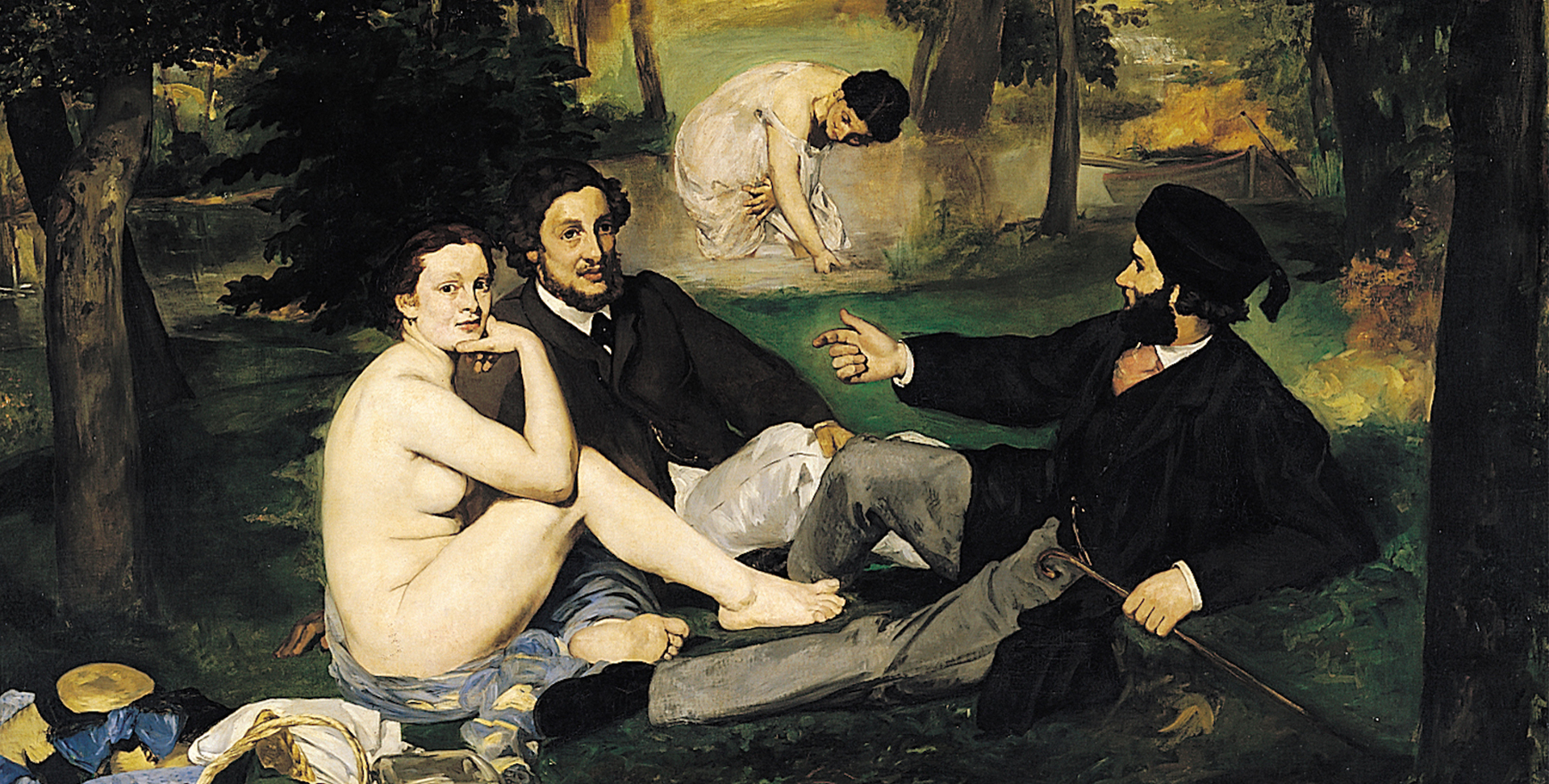


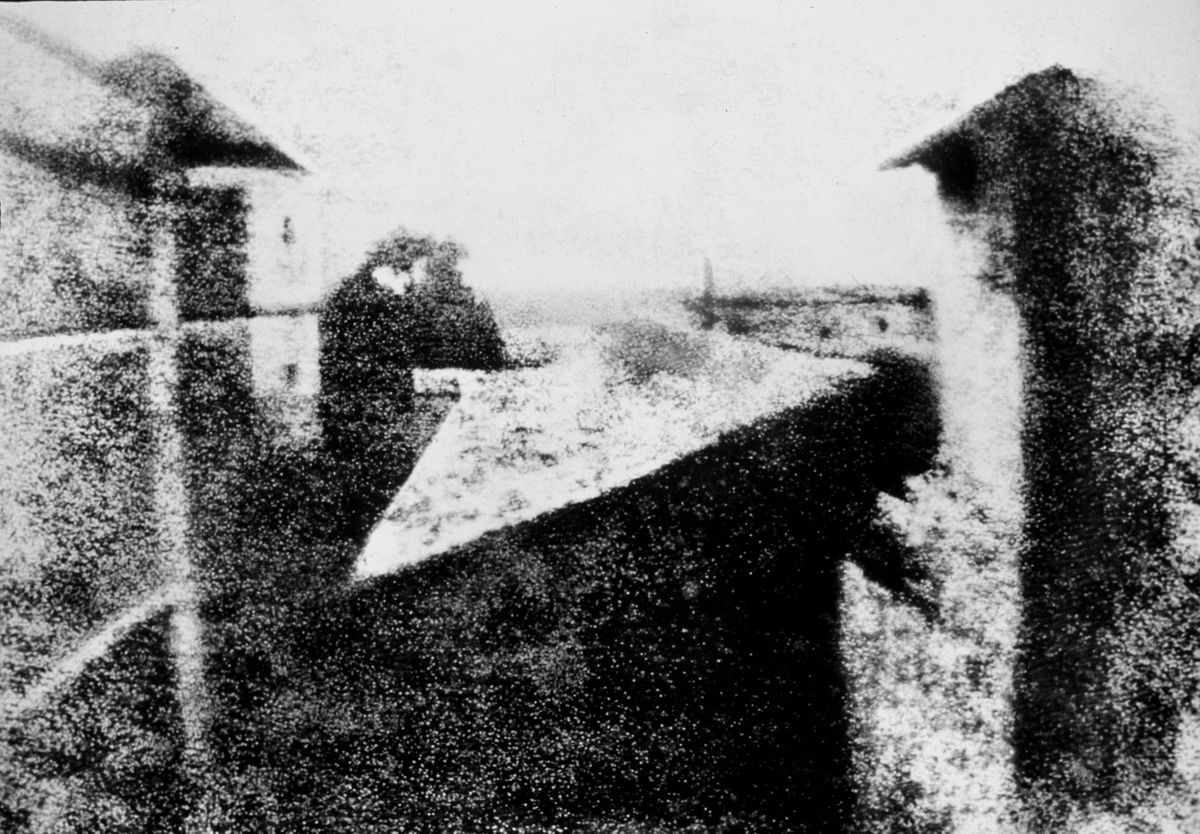
When Le Gray took his photo of the Grande Vague (Great Wave), it followed the first photo, taken 30 years before by Nicéphore Niépce. This was a landscape view from his window.
Niepce had left his camera on its stand without moving it for more than a day to take this picture. Fortunately, technical progress since then has made it possible to reduce the exposure time required when taking photos!

Nicéphore Niépce took the very first photo in 1827.
Photography was not the only image reproduction process to be perfected at the time. Artists discovered many solutions to print multiple copies of their work.

Processes such as lithography or grain wood engraving made it possible to reproduce many copies of works of art.
In the middle of the 19th century, the painter Courbet was not happy. At the time, art consisted of fine, impeccable images destined for the middle class. He was to revolutionise all that with his new stream of Realism.
He set out to portray reality without trying to make it more appealing and he began with his subjects: he did not try to make them more beautiful than they actually were!

It was ambitious. But, like Le Gray with the double negatives, Courbet took a new angle on a burial, with each subject posing in his studio. We are a long way off from a picture portraying reality here!
At the same time, other artists were looking in the same direction. Rosa Bonheur, for example, with her views on working in the fields.
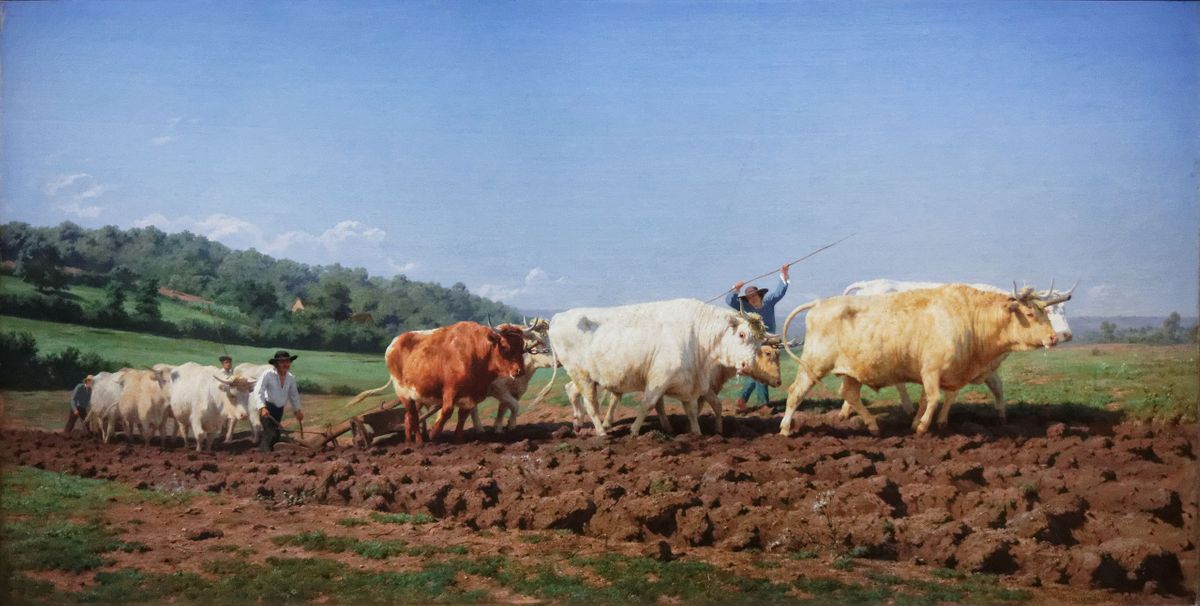

The painter Courbet, who painted characters without idealizing them, initiated the Realist movement.

After Courbet, another artist wanted to paint without idealizing what he saw. His name was Manet, with an “A”. We’ll talk about Monet with an “O” later.
He exhibited this painting in 1863 and shocked the public. They found it ugly and came to see it for a good laugh.
We have to admit that it was far removed from the taste of the time.
During the same year, for example, Alexandre Cabanel exhibited Venus, which was enthusiastically welcomed and immediately bought by Napoleon III.
Manet is a witness to modern life.
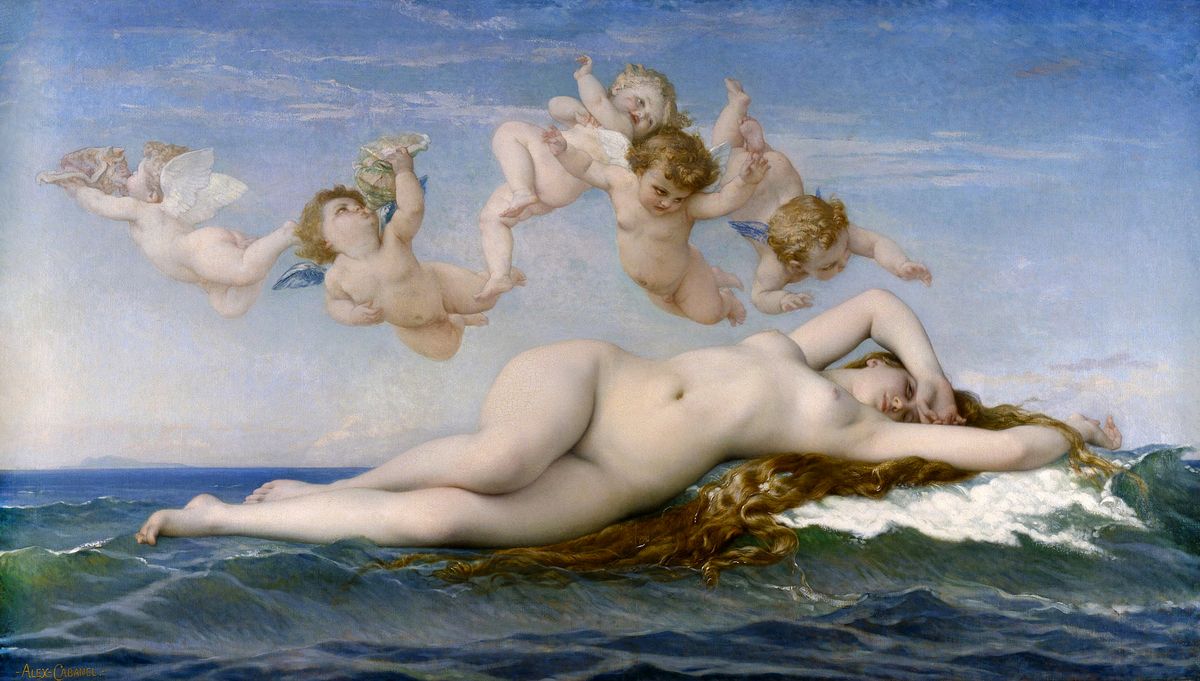
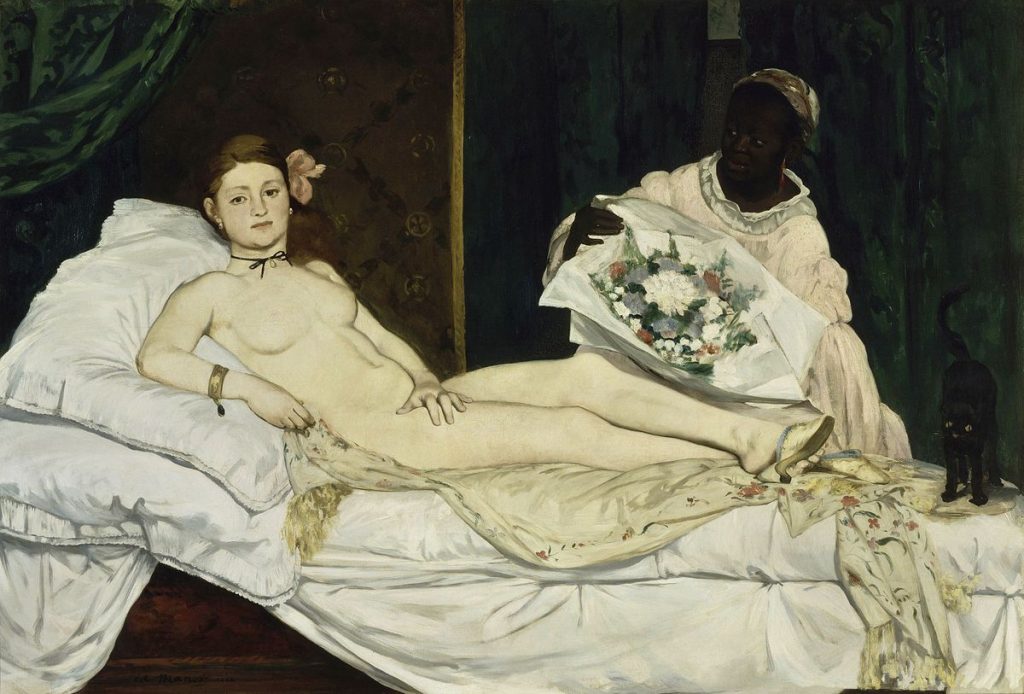
Édouard Manet, Olympia,
1863, oil on canvas, 4’3” x 6’3”, Orsay Museum, Paris
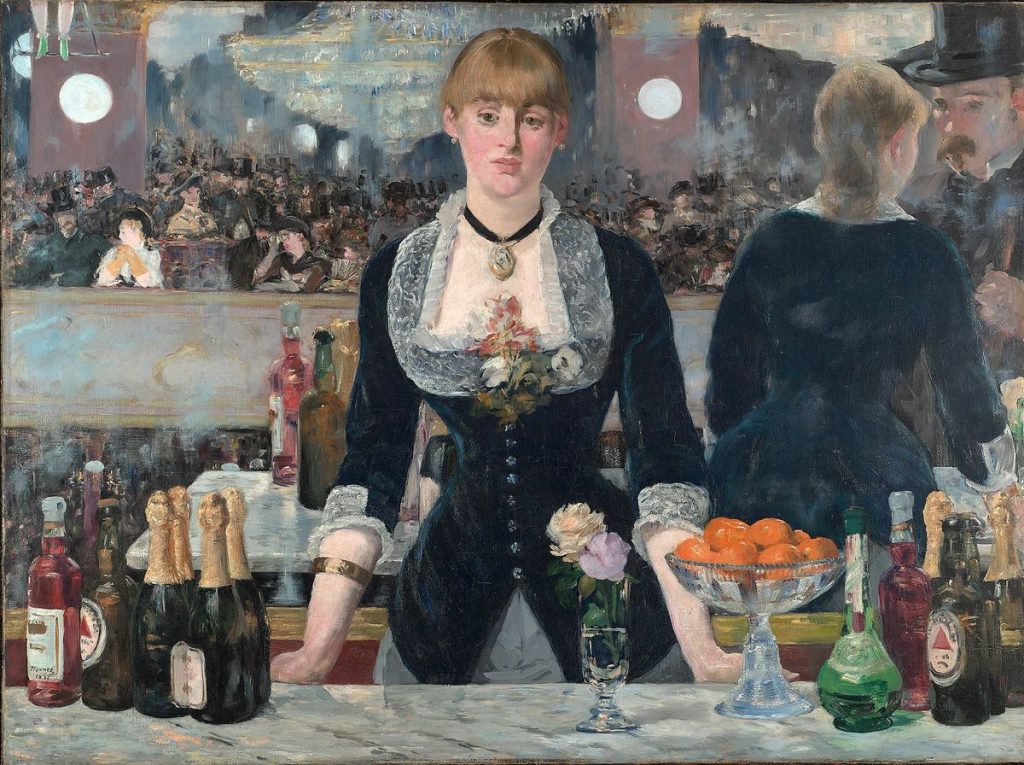
Édouard Manet, A Bar at the Folies-Bergère,
1881-1882, oil on canvas, 3’2” x 4’3”, Courtauld Institute, London

Édouard Manet, Music in the Tuileries,
1862, oil on canvas, 2’6” x 5’11”, National Gallery, London

After Courbet, Manet painted modern subjects without idealizing them, which went against the mainstream taste of the time.
In 1860 Emperor Napoleon III decided that a new opera house would be built in Paris.
Charles Garnier, a 35-year-old architect, won the contract. His project was for a luxurious venue, ideal for the grand festivals of the time.
Garnier mixed different architectural styles from the past. This is known as Eclecticism.
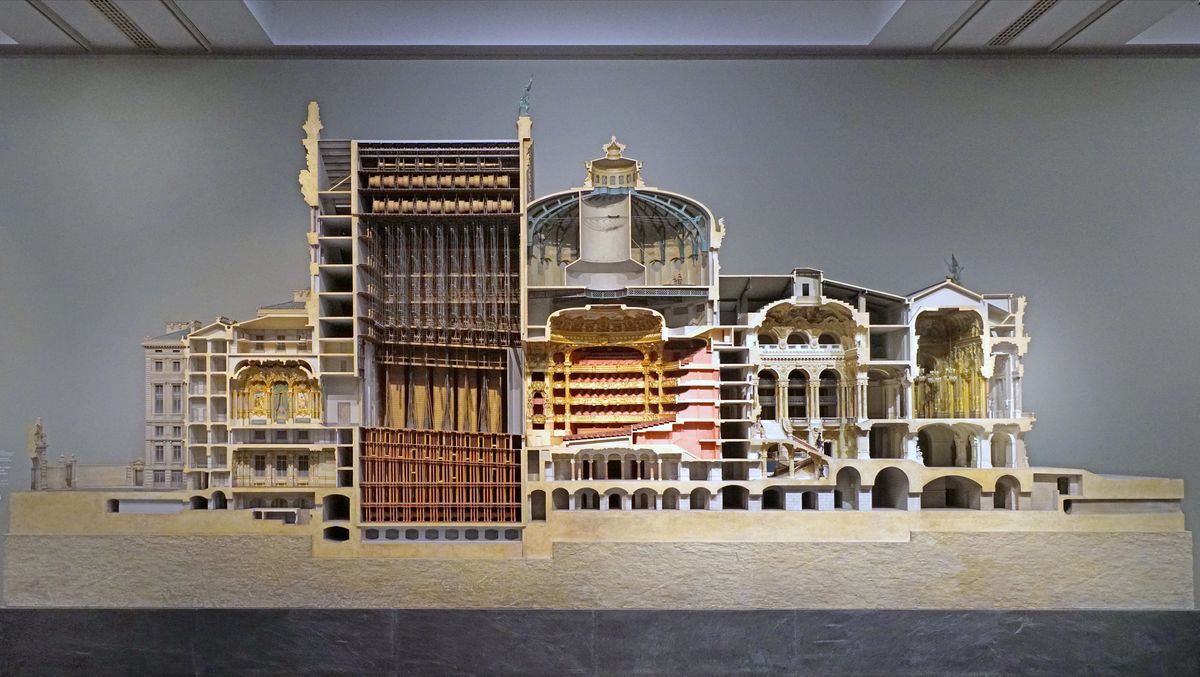
However behind this decorative explosion of shapes and colours, he did not forget what was essential: the venue was designed to host operas. Therefore, a part of it had to be devoted to artists and technical aspects, and another part had to be suitable for receiving and providing seating for the public. This is what we refer to as Rationalism.

Garnier’s Opera House is both eclectic through its mixture of different styles and rationalist because each area was designed for a specific purpose.
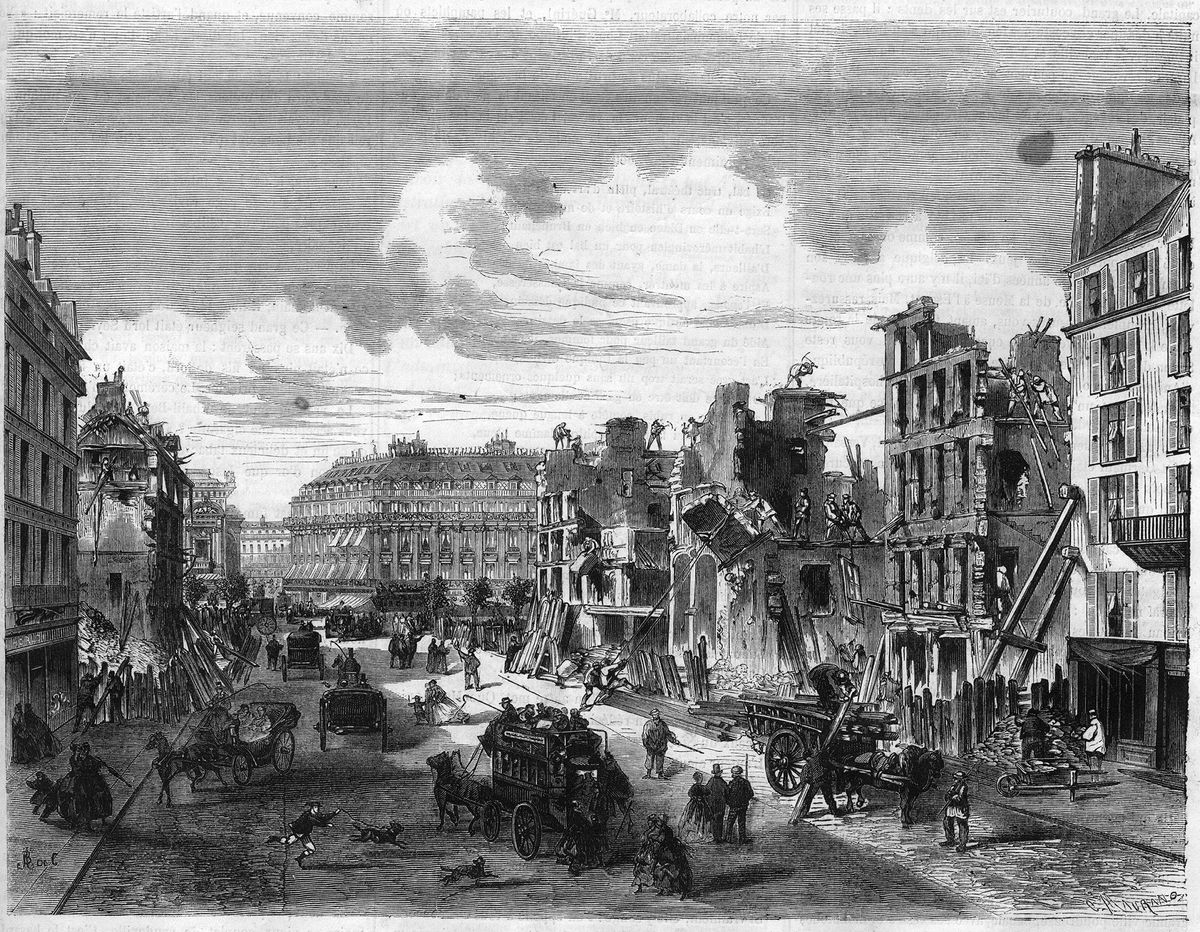
The building of the Opera House was part of a grand urban modernization programme that the Emperor decided to organize for his capital city.
At the time, it was thought that the narrow Parisian streets fostered diseases and the solution was a radical one – whole districts were demolished and rebuilt!
It was the Prefect at the time, Baron Haussman, who took charge of this vast clean-up. That is why we speak of Hausmann’s Paris.
What form did these works take?

This painter worked with a group of friends, including Auguste Renoir and Berthe Morisot. They wanted to shake up the art of their time, but official exhibitions refused to hang their paintings.
So, they decided to exhibit their works independently from formal galleries – a radical move for the time! Between 1874 and 1886, they held eight exhibitions.
These were the “Impressionist Exhibitions”. But what were the characteristics of this new movement?

"*" indicates required fields